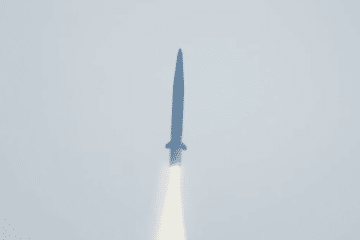According to a statement from LIG Nex1, the Korea Research Institute for defense Technology planning and advancement awarded the contract to the company on November 30th. The defense firm hopes to vastly improve the survivability and lethality of South Korea’s future underwater systems by providing this technology.
LIG Nex1’s sensors will primarily be used in the ROK Navy’s “next-generation submarines.” This most probably refers to the KSS-III, the country’s newest underwater asset. ROKS Dosan Ahn Changho, the first ship of the KSS-III Batch I, was deployed for the first time in August earlier this year. The navy has already launched all three vessels of Batch I and plans on acquiring at least three more KSS-III Batch II ships. Construction on the first ship of Batch II began earlier this year.
According to LIG Nex1, its sensors will also be used in the ROK Navy’s future unmanned submersibles, possibly including the anti-submarine warfare unmanned underwater vehicle (ASWUUV) which conducted its first operational demonstration in July. Advanced sensors are one of three “core technologies” required for the operation of the ASWUUV, with the other two being autonomous navigation and a fuel source which would allow the system to stay submerged for long periods of time.

The company also said that research conducted in developing linear harbour surveillance sensors will help it meet requirements for the program.
“LIG Nex1 will do its duty in securing South Korea’s maritime security within the fast changing future security environment…We will use the experience we have garnered to successfully complete development.”
LIG Nex1 statement
Contacted by Naval News, LIG Nex1 refused to confirm that the sensor was a passive towed array, or to provide additional details, citing “security reasons”.






